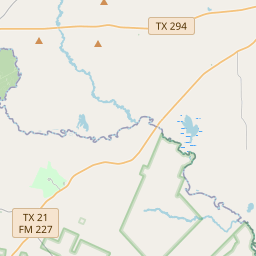Site of the Mission San Francisco De Los Tejas
Historical marker location:






Originally established as Mission San Francisco de los Tejas in 1690 by Franciscan missionaries for the purpose of Christianizing and civilizing the Neches and other Indians of the region
Reestablished in 1716
Abandoned temporarily due to French incursion from Louisiana in 1719
Relocated here as San Francisco de los Neches by the Marquis de Aguayo in 1721
Removed to the Colorado River in 1730
Permanently located on the San Antonio River in 1731 and there known as San Francisco de la Espada
Erected by the State of Texas
1936
As one of the most visible programs of the Texas Historical Commission (THC), historical markers commemorate diverse topics in Texas history, including: the history and architecture of houses, commercial and public buildings, religious congregations, and military sites; events that changed the course of local and state history; and individuals who have made lasting contributions to the state, community organizations, and businesses.
Texas is known for its barbecue, and one of the most famous barbecue restaurants in the state is Kreuz Market in Lockhart. The restaurant has been in operation since 1900 and is still family-owned.
In 1837, the Texas Congress established Cherokee County, named after the Cherokee people, who had settled in the area. The county seat was initially located in the town of Rusk, which had grown as a result of the influx of settlers. Over the years, the county went through various changes, with the establishment of new towns and the growth of the local economy. Agriculture, particularly cotton and livestock farming, became the backbone of the county's economy.
During the Civil War, the county faced significant hardships as many men from Cherokee County enlisted in the Confederate Army. The economy suffered, and the county experienced both political and social unrest. However, following the war, the region gradually recovered, and new industries such as lumbering and oil exploration emerged.
In the 20th century, Cherokee County witnessed significant changes in its economy and demographics. The discovery of oil in the early 1900s brought an economic boom to the area, attracting new businesses and residents. Today, the county continues to thrive, with a diverse economy that includes agriculture, manufacturing, and tourism. The county also pays tribute to its Native American heritage through various cultural and historical organizations.
Cherokee County Timeline
This timeline provides a glimpse into the major events and milestones that have shaped the history of Cherokee County, Texas.
- 1846: Cherokee County is created and organized.
- 1847: The town of Rusk is designated as the county seat.
- 1850s: The area sees conflicts between the Cherokee and local settlers.
- 1861-1865: Cherokee County residents serve in the Confederate Army during the Civil War.
- 1872: The International-Great Northern Railroad is built through Rusk, boosting the local economy.
- 1900: The discovery of the large Berry gypsum deposit leads to the establishment of the Frankston Gypsum Company.
- 1930s: The Great Depression causes significant economic challenges for Cherokee County.
- 1942: Camp Fannin, a World War II army training camp, is established in Cherokee County.
- 1982: Lake Palestine is completed, providing recreational opportunities for residents and visitors.
- Present: Cherokee County continues to be a vibrant community with a mix of agricultural, industrial, and recreational activities.